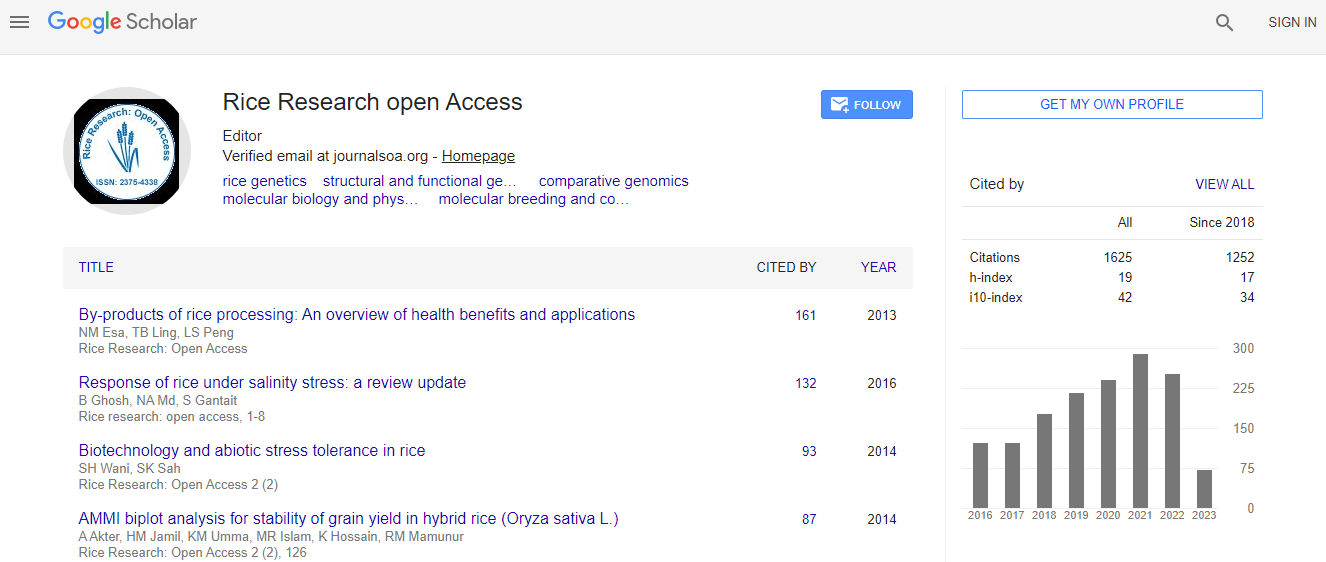Research Article
Transplanting by Uprooting Tillers from Dibbled Field: An Idea for Crop Intensification and Sustainable Rice Cultivation
| M Mamunur Rahman1*,MM Rashid2 and MA Islam3 | ||
| 1Graduate School of Natural Science and Technology, Kanazawa University, Japan | ||
| 2Scientific officer, Plant pathology division, Bangladesh Rice Research Institute, Bangladesh | ||
| 3Principal scientific officer, Adaptive research division, Bangladesh Rice Research Institute, Bangladesh | ||
| Corresponding Author : | Mamaunur Rahman Graduate School of Natural Science and Technology Kanazawa University, Japan Tel: +818042544424 E-mail: rahmanmmamunur@gmail.com |
|
| Received May 30, 2013; Accepted September 19, 2013; Published September 23, 2013 | ||
| Citation: Mamunur Rahman M, Rashid MM, Islam MA (2013) Transplanting by Uprooting Tillers from Dibbled Field: An Idea for Crop Intensification and Sustainable Rice Cultivation. J Rice Res 1:109. doi: 10.4172/jrr.1000109 | ||
| Copyright: © 2013 Mamunur Rahman M, et al. This is an open-access article distributed under the terms of the Creative Commons Attribution License, which permits unrestricted use, distribution, and reproduction in any medium, provided the original author and source are credited. | ||
Related article at Pubmed Pubmed  Scholar Google Scholar Google |
||
Abstract
An experiment was conducted in the field laboratory of Bangladesh Rice Research Institute to determine the suitable time for uprooting of the tillers from dibbled plots for transplanting as well as nitrogen management system in the transplanted field. It was revealed that uprooting of half of the tillers from dibbled plots did not reduce crop yield in the dibbled plots (after uprooting of half of the tillers) compared with dibbled plots without tiller uprooting. In both irrigated and rainfed management systems, transplanting with uprooted tillers from dibbled plot at 30 to 40 days after seeding (DAS) produced optimum yield. Significant yield reduction was observed when the uprooted tillers were transplanted after 40 DAS.
In nitrogen fertilizer management system, two split of urea application was proved to be effective. Considering both tiller splitting time and urea fertilizer applications, uprooting of half of the tillers from dibbled plot at 30 DAS and transplanting to new areas with two split of urea application were found to be effective. This method of rice farming might be suitable for salinity affected coastal areas to escape detrimental effect of salinity during germination and early seedling establishment, as well as suitable to increase cropping intensity.

 Spanish
Spanish  Chinese
Chinese  Russian
Russian  German
German  French
French  Japanese
Japanese  Portuguese
Portuguese  Hindi
Hindi 
